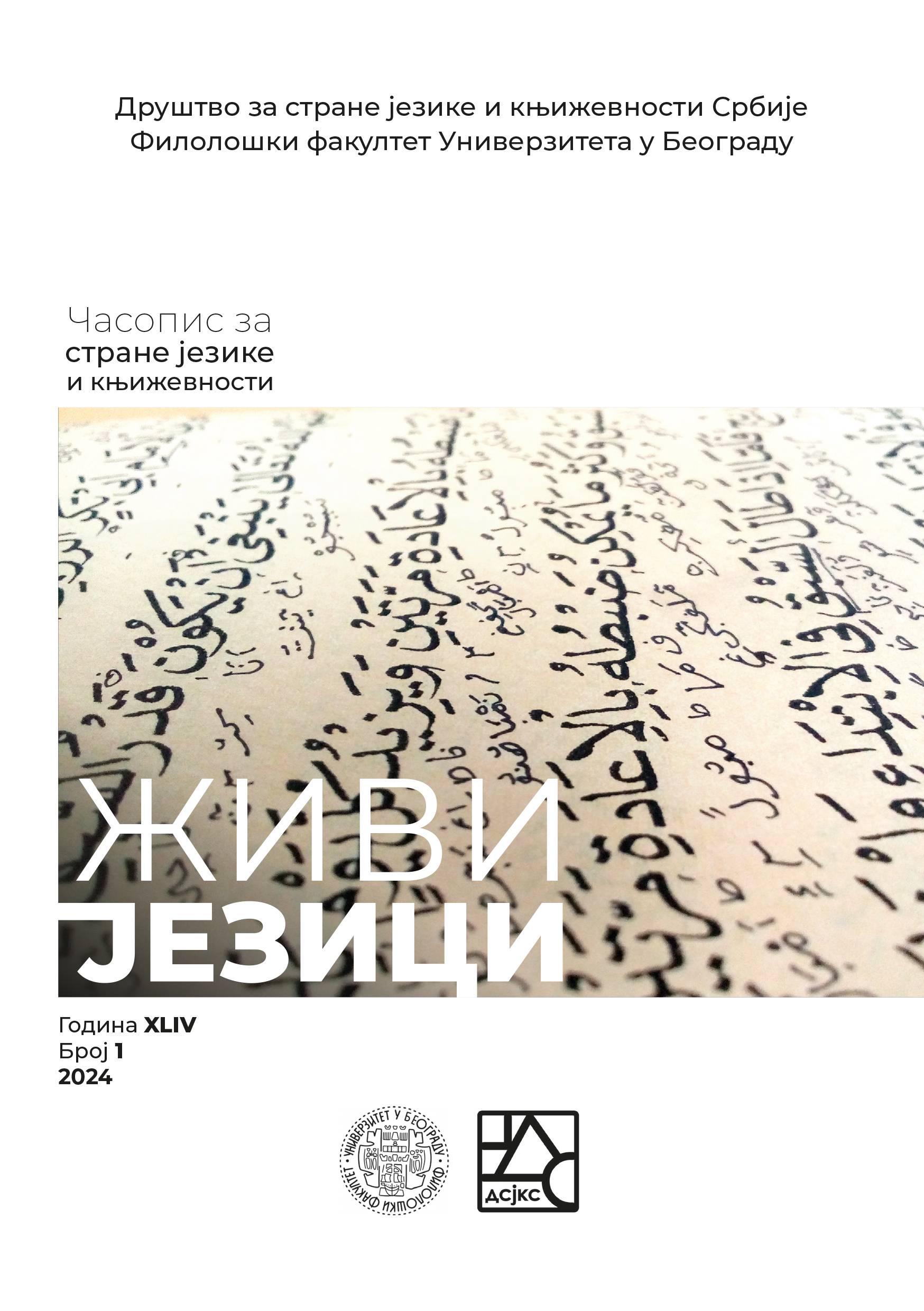DEAF WOMEN REPRESENTATION IN HISTORICAL MONOGRAPHS WRITTEN BY HEARING AUTHORS
DOI:
https://doi.org/10.18485/zivjez.2024.44.1.9Keywords:
Deaf women, Historical representation, marginalization, Deaf studies, gender biasAbstract
This paper investigates the historical representation of Deaf women in both general and specialized historical texts. Despite their significant contributions, Deaf women are often overlooked, leading to a perception of their identities primarily as Deaf individuals rather than as women. This dual marginalization within both the Deaf community and broader society underscores systemic issues in historical scholarship. Major works by authors such as Sachs, Lane, and Baynton, although pivotal in documenting Deaf culture, frequently neglect the unique experiences and achievements of Deaf women. Key milestones, like the election of Gertrude Galloway as the first woman president of the National Association of the Deaf in the US and the founding of Deaf Women United Inc. (DWU), are minimally explored, reflecting broader societal gender biases. This paper highlights the critical need for inclusive historical narratives that fully integrate the experiences of Deaf women. By documenting and acknowledging their unique challenges and contributions, we can foster a more comprehensive and equitable understanding of history, empowering Deaf women by validating their identities and achievements.
Keywords: Deaf women, historical representation, marginalization, Deaf studies, gender bias.
References
Bayton 1996: D. Baynton, Forbidden Signs: American Culture and the Campaign Against Sign Language. University of Chicago Press.
Beard 1933: M. Beard, Woman as Force in History. New York: Macmillan.
Blumenthal-Kelly 2016: A. Blumenthal-Kelly, Perspectives on Deaf Women’s History and Contributions. In M. Kelly (ed.), Studies in Deaf Women’s History. Washington, D.C.: Gallaudet University Press.
Castañeda 1990: A. Castañeda, Compensatory and Contribution Histories in Understanding Marginalized Groups. Journal of Historical Methods, 24(3), 219–238.
Crenshaw 1989: K. Crenshaw, Demarginalizing the Intersection of Race and Sex: A Black Feminist Critique of Antidiscrimination Doctrine, Feminist Theory, and Antiracist Politics. University of Chicago Legal Forum, 1989(1), 139–167.
Garland-Thomson 2005: R. Garland-Thomson, Disability and the Theory of Intersectionality. In L.J. Davis (ed.), The Disability Studies Reader (pp. 73–87). New York: Routledge.
Gertz 1996: G. Gertz, Intersectionality of Gender and Disability in Deaf Women’s Studies. American Annals of the Deaf, 141(4), 457–468.
Hurwitz 1993: V. Hurwitz, Introduction to Deaf Women’s Studies Course Curriculum. Rochester: National Technical Institute for the Deaf.
Karenga 2002: M. Karenga, Introduction to Black Studies, 3rd ed. Los Angeles: University of Sankore Press.
Katz 1996: C.K. Katz, A Comparative Analysis of Deaf, Women, and Black Studies. In Deaf Studies IV Conference Proceedings: Visions of the Past – Visions of the Future. Washington, D.C.: Gallaudet University College for Continuing Education.
Kelly 2016: A.B. Kelly, Deaf HERstory: Making Strides. Sign Language Studies, 17(1), 122-129.
Kusters 2017: A. Kusters, Deaf Space in Sub-Saharan Africa: Insights from Ghana, Kenya, and South Africa. In A. Kusters, M. De Meulder, and D. O’Brien (eds.), It’s a Small World: International Deaf Spaces and Encounters. Washington, D.C.: Gallaudet University Press.
Ladd 2003: P. Ladd, Understanding Deaf Culture: In Search of Deafhood. Clevedon: Multilingual Matters.
Lane 1984: H. Lane, When the Mind Hears: A History of the Deaf. New York: Vintage.
Lane, Hoffmeister and Bahan 1996: H.L. Lane, R. Hoffmeister, B.J. Bahan, A Journey into the Deaf-world. Dawn Sign Press.
Lerner 1975: G. Lerner, Placing Women in History: Definitions and Challenges. Feminist Studies, 5, 14-6. DOI: 10.2307/3518951.
Lerner 1994: G. Lerner, The Creation of Feminist Consciousness: From the Middle Ages to Eighteen-Seventy. New York: Oxford University Press.
Monaghan, Schmaling, Nakamura and Turner 2003: L. Monaghan, C. Schmaling, K. Nakamura, and G.H. Turner, Many Ways to Be Deaf: International Variation in Deaf Communities. Washington, D.C.: Gallaudet University Press.
Nakamura 2006: K. Nakamura, Deaf in Japan: Signing and the Politics of Identity. Ithaca: Cornell University Press.
Padden and Humphries 2005: C. Padden and T. Humphries, Inside Deaf Culture. Cambridge: Harvard University Press.
Pizan 1982: de C. Pizan, The Book of the City of Ladies (E.J. Richards, Trans.). New York: Persea. (Original work published 1404).
Sacks 1989: O. Sacks, Seeing Voices: A Journey into the World of the Deaf. Berkeley: University of California Press.
Stanton, Anthony, Gage and Harper 1969: E.C. Stanton, S.B. Anthony, M.J. Gage, I.H. Harper, History of Woman Suffrage. New York: Arno Press.
Stokoe, Croneberg and Casterline 1965: W.C. Stokoe, C.G. Croneberg, D.S. Casterline, A Dictionary of American Sign Language on Linguistic Principles. Washington, D.C.: Gallaudet College Press,
Van Cleve and Crouch 1989: J. Van Cleve, B. Crouch, A Place of Their Own: Creating the Deaf Community in America. Washington. D.C.: Gallaudet University Press.
Downloads
Published
How to Cite
Issue
Section
License
Copyright (c) 2024 Ana Jovanović

This work is licensed under a Creative Commons Attribution-NonCommercial-ShareAlike 4.0 International License.


